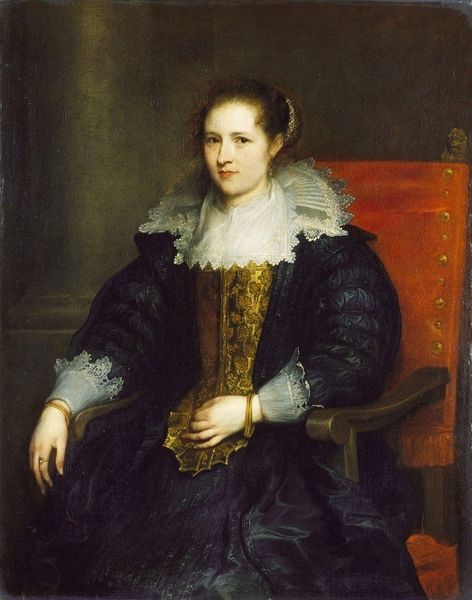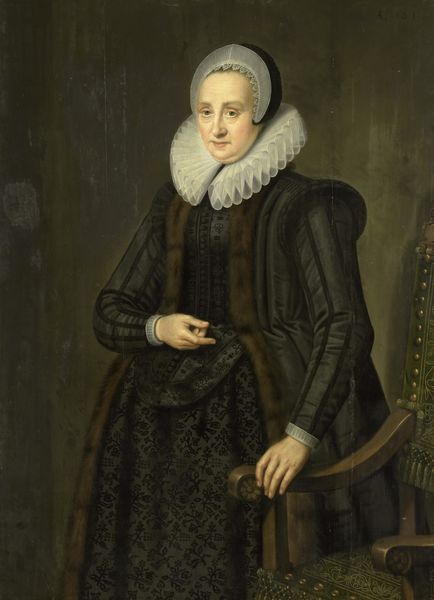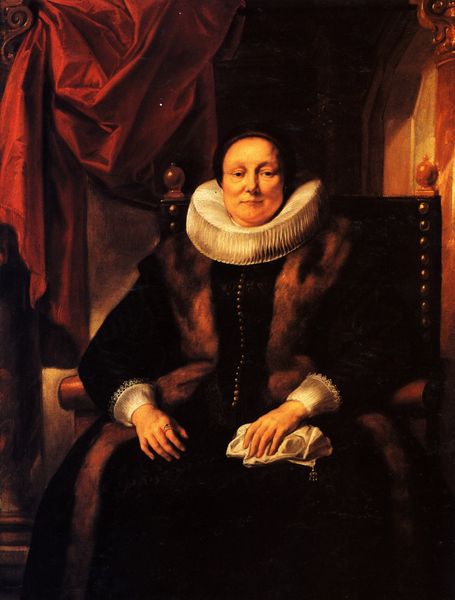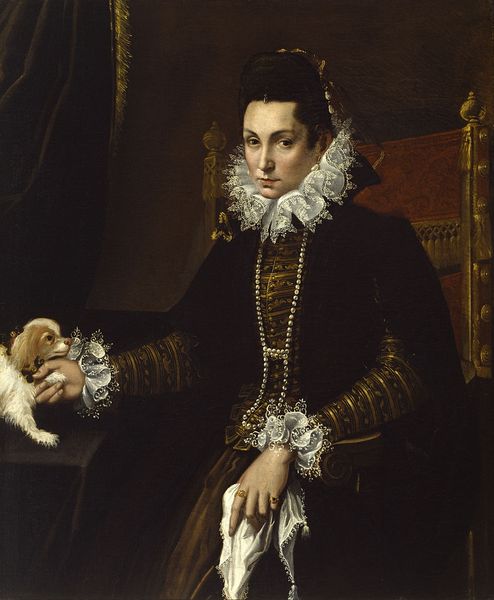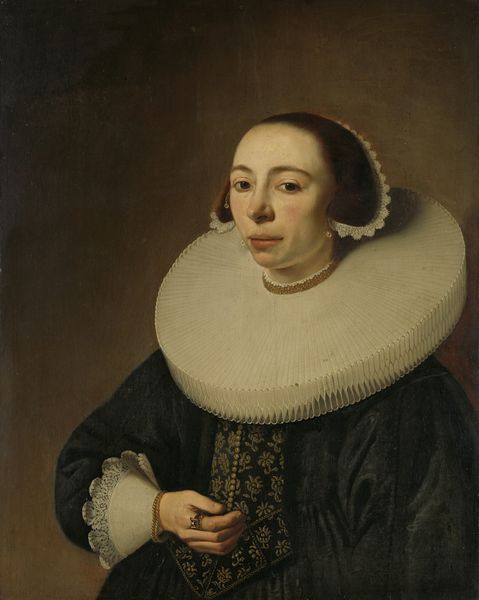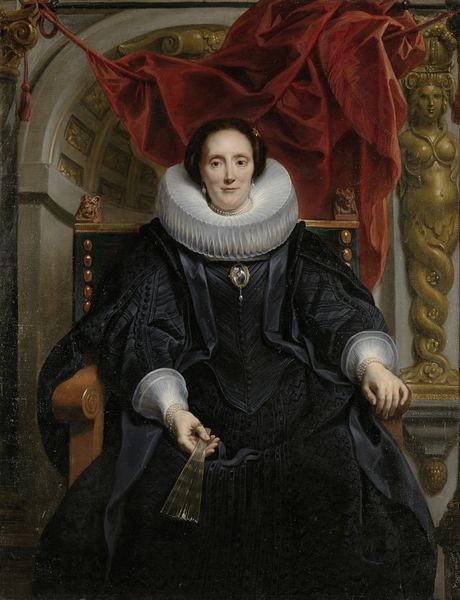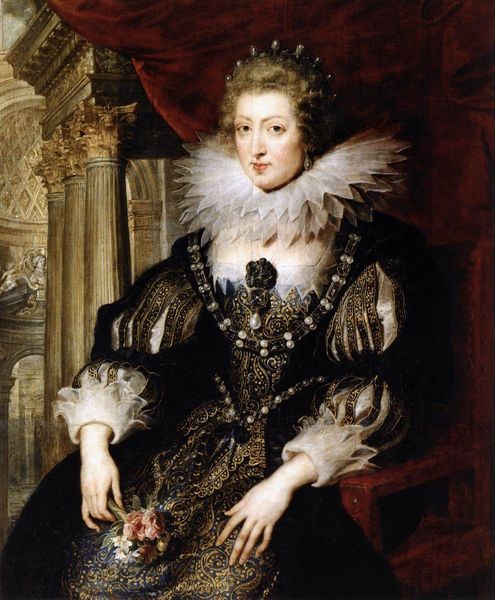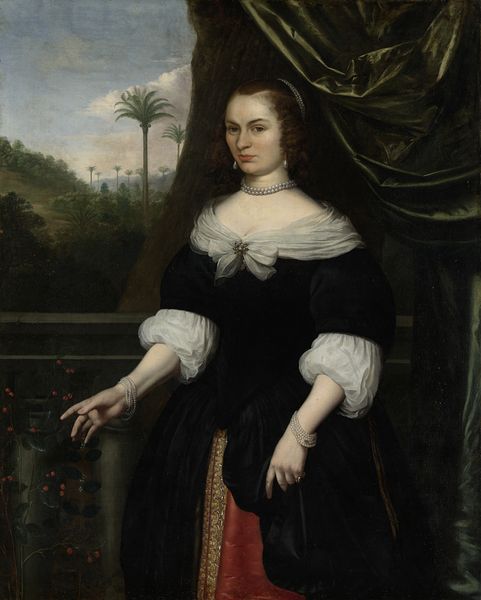
oil-paint
#
portrait
#
figurative
#
baroque
#
oil-paint
#
figuration
#
history-painting
Copyright: Public Domain: Artvee
Curator: This is Peter Paul Rubens’ "Portrait of a Woman, Possibly Clara Fourment," painted around 1630. A striking depiction of wealth and status, wouldn’t you agree? Editor: Indeed. My first impression is the way the light catches the ruffled collar and the soft texture of the woman's skin; it’s exquisitely rendered and creates a dramatic contrast against the darkness of her dress. The composition, anchored by the architectural column and the heavy red drape, conveys both power and serenity. Curator: It's important to consider the historical context. Rubens was at the height of his career, and this portrait reflects the aspirations of the upper classes. Notice the elaborate costume. Her dark attire would be costly, her large ruff collar indicated refinement, while the pearl jewelry subtly showcases economic affluence. Editor: I appreciate that socio-economic insight; still, it is Rubens' rendering of light and shadow and use of impasto in her face that commands the viewers gaze. See the precise lines in her neckpiece and the gentle application of pigment? The play of texture and form constructs an inviting composition. It almost abstracts and overshadows the subject's status! Curator: Her dark garments, though costly, point to a society undergoing transformations of its own. This particular kind of dark luxury material became popular in the seventeenth century after having its trading monopolized by the Dutch. You cannot separate a work like this from its economic context, the wealth from distant locales being displayed through this woman and memorialized for eternity. Editor: The context certainly shapes our reading. But it's impossible to deny Rubens' masterful manipulation of his medium. It transcends its socio-historical constraints. The texture of the soft plume she holds and the column adjacent act as visual metaphors. These two disparate visual signifiers enhance our understanding of how carefully this portrait has been structured and arranged. Curator: Yes, a composition deeply rooted in its time. Each deliberate decision—from the dark gown to the imposing column—speaks to the societal dynamics and personal circumstances of the sitter. She’s literally positioned in front of all of it, suggesting her role was critical to these political structures. Editor: A convergence, really, of material expertise and historical reflection—a potent reminder that studying art enables a cross-disciplinary analysis of what’s really visible when a portrait sits before us.
Comments
No comments
Be the first to comment and join the conversation on the ultimate creative platform.


